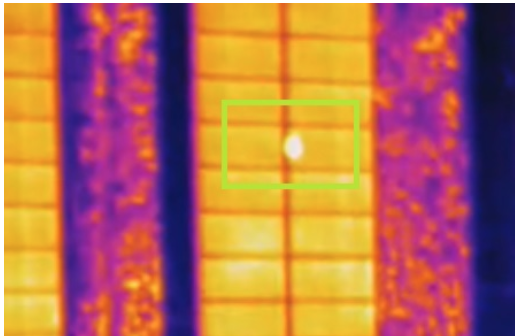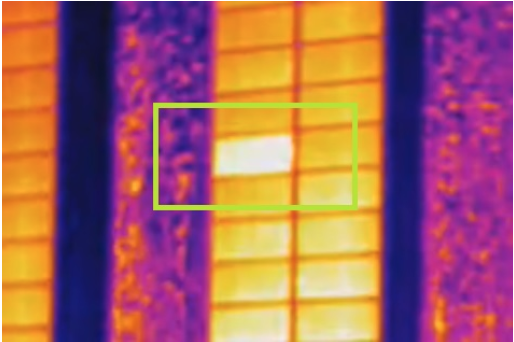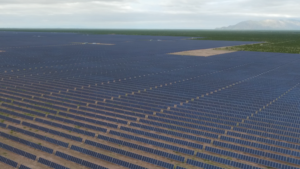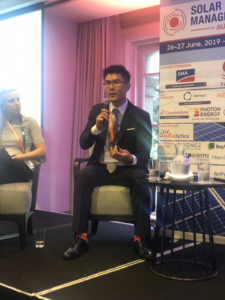Even the smallest imperfections in a large system can snowball into a disaster; what are the most common dangers to a solar farm and why are they so dangerous?

When dealing with large, complicated systems, there’s no such thing as a small issue. An improperly sealed window in a house can ratchet up heating bills for years in cold climates, or speed up the humidity damage to wood in rainy climates. In solar energy systems, catching these issues early is absolutely imperative. For example, in 2016, the Ivanpah Solar Electric Generating System had a few misaligned mirrors, causing a fire that left the plant at one third capacity for an entire month, costing around $70,000 in lost profits alone, to say nothing of repair costs. Aerial inspections are the most cost effective and accurate way to collect data on solar farms, but that data is useless without people and software who know what to look for and how to analyze it. In this article, we will go through several of the most common types of issues that arise on solar farms and how to recognize them.


The absolute most common issue detected on solar farms are known as hotspots, pictured above. They are easily identifiable through thermal imaging analysis, and appear as discolored areas, indicating greater surface temperature than in functioning areas. There are a number of causes to hotspots. Often, they are caused by bird droppings, dirt, or other detritus, in which case the panels simply need to be cleaned. Other time, hotspots are caused by microfractures or broken cells, which lead to overheating. In this case, the repair is still pretty simple; the affected cell or cells must be replaced. Though this issue does not cause much loss in efficiency due to its small size, it can quickly expand into a real problem. Cracks left unrepaired will grow, and overheating cells can damage surrounding ones, or even start devastating fires.

The most expensive errors are usually diode, string, and inverter failures. These can happen for a number of reasons, including flawed construction, water damage, or even animals gnawing at wires. The reason these malfunctions are so expensive is because the scale that they affect; a string that isn’t functioning can take out between 20-30 solar modules, about 9kw of production. While these issues aren’t any more likely to escalate than hotspots, the loss in profit is many times greater. Fortunately, the fact that they affect so much makes them easy to find once a problem has been identified. If one row, or half a row is inactive, or performing below expectations, then the problem is in something that affects all of that row and nothing else. Aerospec Technologies’ software catches these malfunctions before any other service can. With Artificial-Intelligence driven analysis, changes in temperature or state that would be invisible to the human eye can be spotted and cross-referenced against other situations. Areas likely to develop into a problem are identified and given to the O&M crew to be repaired to minimize profit loss.

The last category of error is unusual in that they are not usually malfunctions that negatively affect performance. At the same time, they are more dangerous to the operation of the solar farm than anything else. This category is broadly grouped as environmental changes. This ranges from overgrown vegetation, topographic erosion, to damages in perimeter fencing. Each of these is a massive threat. Overgrown vegetation can lead to fires that ruin investments. Topographic changes, most often from erosion, are difficult to notice with the naked eye, and are completely harmless until something collapses. Solar farms require careful control of the environment.
Few changes spell instant doom for a solar farm. Natural disasters, or other acts of god are beyond human control, but the greatest danger to any complex system is a cascade. A small imperfection will snowball into something larger given time, and that cannot be allowed to happen. Regular operations and maintenance work keep solar farms functioning and profitable, and the more equipped crews are with knowledge and information, the better they do. Aerospec Technologies inspects farms up to 10 times faster than manual crews, allowing rapid identification and repair. Aerospec has managed to save over $1 million in avoided repair costs per 100MW. Check out Aerospec Technologies for the best inspection information there is.
Aerospec provides you:
- Proven expertise in the renewable energy industry
- Reliable integration of hardware and software
- An AI-powered platform for advanced analytics
- Experts on board (FAA certified UAS pilots, solar researchers, certified thermographers)
- Safety-first mindset (zero incident record to-date)



